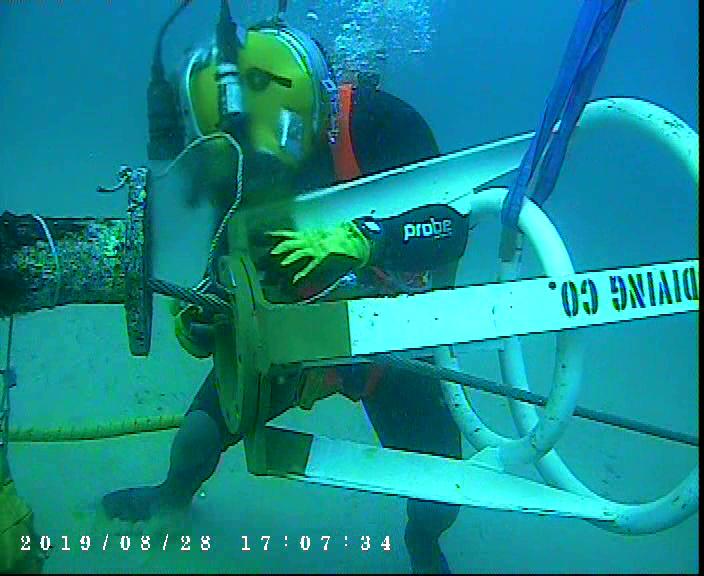
Growing up with a Father who worked in the maritime industry as a commercial diver, I was given the rare opportunity to glimpse into a career which is rarely seen or considered. Unlike an office job, my Dad’s commute to work consisted of driving down to the dock, getting on a boat, donning a wetsuit, putting on 15kg dive helmet attached to an umbilical cord providing oxygen, and descending into the depths of the sea in near zero visibility to operate. Now this is just one aspect of what workers in the maritime industry do. Workers within the maritime industry cover industries such as: diving, ferries, offshore oil and gas workers, port services, shipping, and stevedoring, operating in telecommunications, transportation, mining, and construction. Workers within the maritime industry are presented with the task of operating in one of the most isolated parts of our world. The beauty and the danger of the sea is not lost on these workers, thus that is why the:
“MUA, here to stay!”
The Maritime Union of Australia (MUA) celebrates its 150 year anniversary this year. Founded in 1872, as the Sydney Wharf Labourers Union, leading to the Seaman’s Union of Australia, now the MUA. The MUA has a rich history as the first maritime union in the world. Since its foundation, the protection of waterfront workers rights has been the focus of the MUA. Its history provides an interesting discussion into the changing context of the world in the face of internationalism, class struggle and capitalism and its relation to the protection of waterfront workers rights. A focal point in the MUA’s history was the ‘Hungry Mile’ during the Great Depression. The dockland area of Darling Harbour East, Sydney (where Barangaroo now is), whereby workers would walk from wharf to wharf looking for work under the “bull” system, where only the largest men were chosen first for work.
The MUA’s position in history, being at the forefront of the class struggle and the socialist cause in Australia, has confounded in their focus on the significance on the importance of social activism in protecting the rights and liberties of various groups as well as its own. The MUA over the years has been involved in anti- Vietnam war movement, anti- Apartheid movement, Women’s movement, and participated in the nuclear disarmament movement. Alongside, protecting the rights of waterfront workers, the MUA stresses the importance of social activism in gaining the equal rights of Indigenous and First Nations peoples before the rights of maritime workers. As there is no one without the other.
“…to learn from things that we’ve gone through and not to make the same mistakes”
Paddy Crumlin, National Secretary, MUA at Launch of Sydney Wharfies Mural, Australian Maritime Museum (2022)
The MUA recognises the protection of various groups rights and liberties through their motto:
Struggle, Solidarity, Unity
Upon contacting the MUA Sydney Branch secretary, Paul Garrett, and discussing some ideas of what they would like, I had the pleasure of attending the launch of the Sydney Wharfies Mural at the Australian National Maritime Museum to meet some of their members. The ‘Wharfies Mural’, originally located in the canteen area of the MUA’s office on 601 Sussex st, Sydney, the mural is a testament to the rich history of the MUA and its workers. Standing as the collective effort of its members between 1953 to 1965, while it may not be artistically elaborate, its depiction of maritime workers struggles over the years is a salient image of the MUA’s fight against injustice and class struggle.

After attending the mural launch, I was able to contextualise more of an idea of the MUA and what they do. While my initial interest stemmed from my experience growing up with a Father who worked in the maritime industry, I was immediately hooked upon learning the rich history of the MUA and how their position in history has culminated in one of the largest unions in Australia. I am very interested in their involvement in social activism, whereby their recognition of Indigenous sovereignty and Women’s rights provides a great insight into what is generally considered a highly “masculine” industry.
My project will focus on women’s involvement in MUA history, and how it has changed over the years to culminate in what it is today. I will focus particularly on one of their first female seafarers who sailed out of Brisbane, Gizelle “Gus” Konow. In looking at Gus’ story, I will be able to contextualise and map a history of women’s involvement in the maritime industry. I will attempt to do this through gathering information and stories on her from other MUA members, co-workers, family and friends. In doing so I will be interacting with a form of oral history that will speak to both the struggle and efforts of women in a historically ‘masculine’ industry. To aid me in this, the MUA has given me access to various contacts that will help me to track down and contact people. They have allowed me to work with their Film Unit and utilise any of the sources they have. This will be helpful in utilised resources while would not be available for public record, as well as visualising an industry for which I have little experience in.
